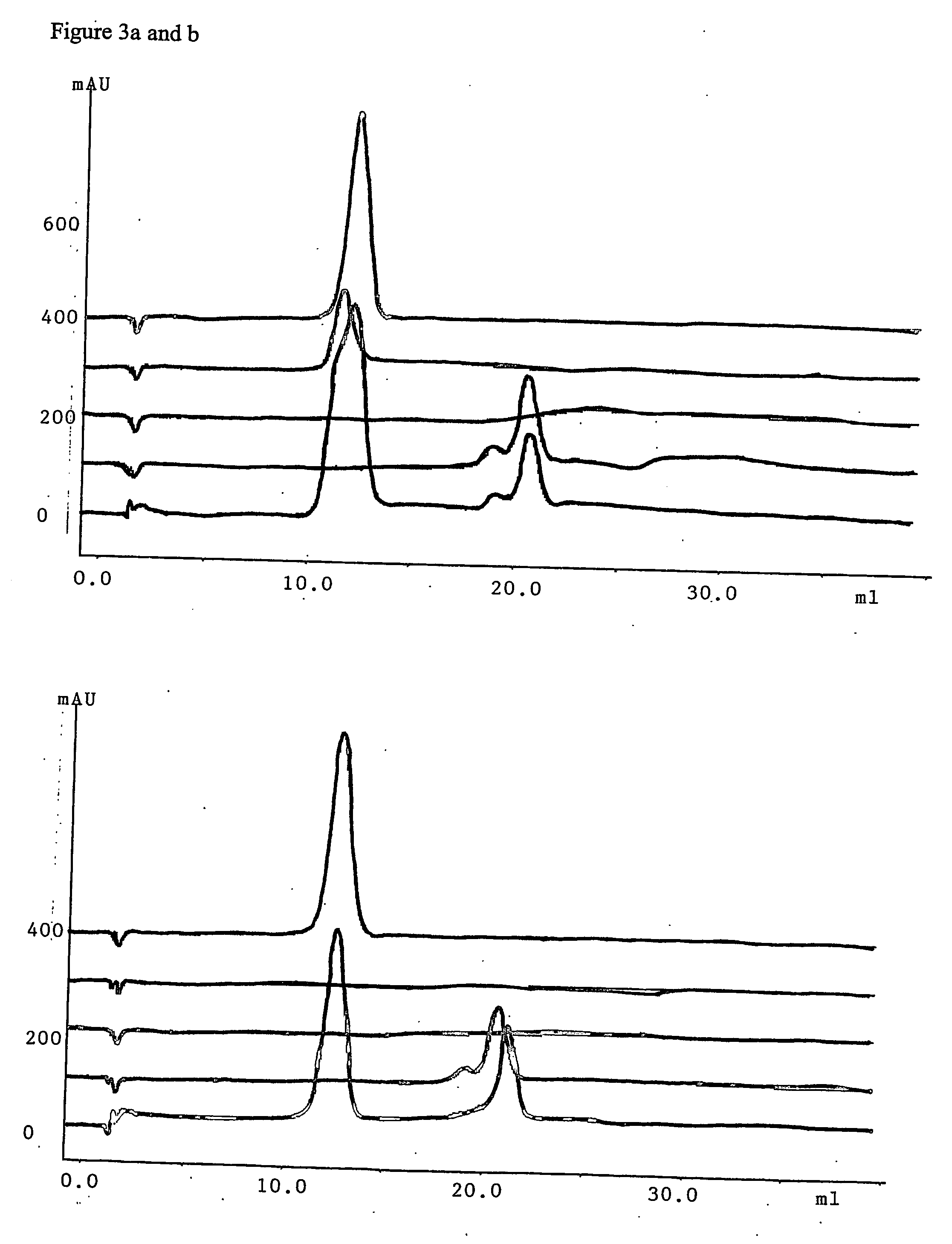Use of ph-responsive polymers
a polymer and ph-responsive technology, applied in the field of ph-responsive polymers, can solve the problems of target proteins being denatured during the process, rpc and hic matrices are not clear lines, and still involve drawbacks, so as to improve selectivity and/or resolution, and recover at least as good effects
- Summary
- Abstract
- Description
- Claims
- Application Information
AI Technical Summary
Benefits of technology
Problems solved by technology
Method used
Image
Examples
example 1
Preparation of Aminified Allyl Sepharose™ HP
[0093] Preparation of Allyl-HP: 100 ml of drained Sepharose™ HP were placed in a 250 ml vessel, 25 ml of water was added and stirring was initiated. After 60 minutes at 50° C., various amounts of NaOH, 0.2 g of NaBH4 and 6 g of Na2SO4 were added and the substances were left to react for 16-20 hours during continuos stirring at 50° C.
[0094] Aminification of Allyl-HP: The drained Allyl-HP gel was placed in a vessel with 50-100 ml of water and stirring was initiated. 5 g NaAc was added and Br2 (aq) was added until a remaining yellow colour was seen, then NaCOOH was added until the colour disappeared, and the gel was washed with water.
[0095] A solution of: 17 g 1,6 diamine hexane, 8.8 g NaCl, 50 ml water was prepared and added to the cooling gel. The reaction was allowed to take place in 50° C. for 16-20 hours.
example 2
Analyses of the Modified Sepharose™ HP-Gel
[0096] Titration Results
[0097] The results of the titrations were as expected. The allylic concentration of the gel increased with an increasing weight percentage of sodium hydroxide, as did the chloride ion capacity of the gel (Table 1).
TABLE 1Titration results for gels with different amounts of added NaOHAmount of NaOHCl− capacity of aminifiedadded to the gelAllylic concentrationgel without polymer[g / 100 ml gel][μmoles / ml][μmoles / ml]453.852658.01121073.7121
example 3
Coupling of PVCL-NPA Copolymers to the Aminified Gels
[0098] Preparation of 10 ml of Gel:
[0099] 10 ml of amine modified agarose particles were washed with DMF. 96 mg of PVCL-NPA were dissolved in 10 ml of DMF and the solution was then added to the agarose particles. The mixture was left to shake over night. 50 μl of acetic anhydride were added to the mixture (to acetylate the residual amino alkyls of the carrier), followed by filtering on a glass filter (pore size 4) and washing with 200 ml of DMF to remove excess polymer.
[0100] The evaluation of the gel showed that the acetylation of the amino alkyls had been insufficient, why the volume of added acetic anhydride was increased to 10 ml.
PUM
| Property | Measurement | Unit |
|---|---|---|
| pKa | aaaaa | aaaaa |
| pH | aaaaa | aaaaa |
| pH | aaaaa | aaaaa |
Abstract
Description
Claims
Application Information
 Login to View More
Login to View More - R&D
- Intellectual Property
- Life Sciences
- Materials
- Tech Scout
- Unparalleled Data Quality
- Higher Quality Content
- 60% Fewer Hallucinations
Browse by: Latest US Patents, China's latest patents, Technical Efficacy Thesaurus, Application Domain, Technology Topic, Popular Technical Reports.
© 2025 PatSnap. All rights reserved.Legal|Privacy policy|Modern Slavery Act Transparency Statement|Sitemap|About US| Contact US: help@patsnap.com



